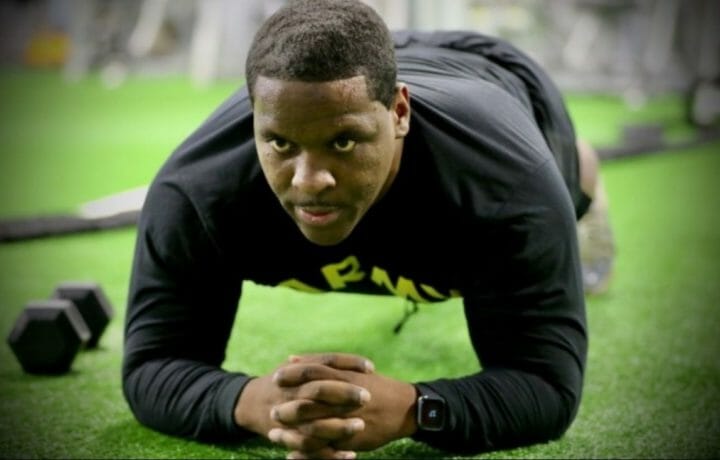Despite all of the online commentary about combat readiness, the communication about getting the Army Combat Fitness Test (ACFT) off the ground continues to say, “we’re just trying to meet mission goals and develop Soldiers who are combat ready – regardless of gender or age.
“Take the test,” said Sgt. Maj. of the Army Michael A. Grinston. “If we do that, I believe we’ll see fewer injuries across the force, and we’ll have an Army that is fit and ready for wherever we’re asked to deploy, fight, win, and return home.”
As the ACFT 3.0 gets rolled out and incorporates more updates, it’s clear that the Army is still finding it a challenge to get data that either supports that the test is headed in the right direction or if more tweaks are needed. While Army leadership says that they are listening to all the gender and age concerns, they are still pushing to see numbers in order to finalize the test.
Tiers not TEars
The ACFT 3.0 has added in performance categories: green, bronze, silver, gold, and platinum, with green being the lowest and platinum being the highest. Both male and female Soldier scores will be used to develop the categories. The standards will be gender neutral, and future iterations of the evaluation system may allow for competition in the ranks. With a tiered approach to the scoring, officials can quickly assess fitness levels in the force. With fitness categories, Soldiers have the ability to see their score in comparison with the rest of the force, giving the ability to see what to work on.
Despite the tiered system for scores, current performance will be treated only as data collection. Full implementation is planned for May 2022 – at the earliest. But until then, in order to continue to make improvements, leaders need data.
Planks Now a For Real Alternative
The ACFT 3.0 added in planks as a fully graded substitute for the leg tuck. Soldiers can now take their pick for either the leg tuck or plank test when completing the abdominal core assessment. Just like the other events in the the test, the plank will be scored on a 100-point scale. With this adjustment to the test, officials at the U.S. Army Center for Initial Military Training (CIMT) expect the scores to start improving. Previously, Soldiers who opted for the plank could only score 60 points.
While the plank is a fully scored option, officials encourage soldiers to continue to strive to work on it. The plank swap is intended to give Soldiers time to adapt – especially since many were never required to build this level of upper body strength before.
Data Needed: Take the ACFT
Maj. Gen. Lonnie G. Hibbard says that for those who have taken the test so far, there’s an 85% pass rate. The ACFT 3.0 has had its share of feedback, and unfortunately, a lot of that has led to testing anxiety. But with the plank swap, leadership expect the pass rate to increase the abdominal core test. Overhauling a fitness test can take years to achieve, but without data, the Army can’t make the necessary tweaks.
“We are going to make policy decisions informed by the data collected through implementation,” Grinston said. “Currently, less than 25% of the total Army has taken the test. And most of that is from our [Army Forces Command] units.
“What’s more, is only 7% of the Army has taken it twice,” he added. “So, we aren’t able to see the impacts of these decisions.”
No matter what number follows the ACFT, it’s clear that the test is here to stay.



